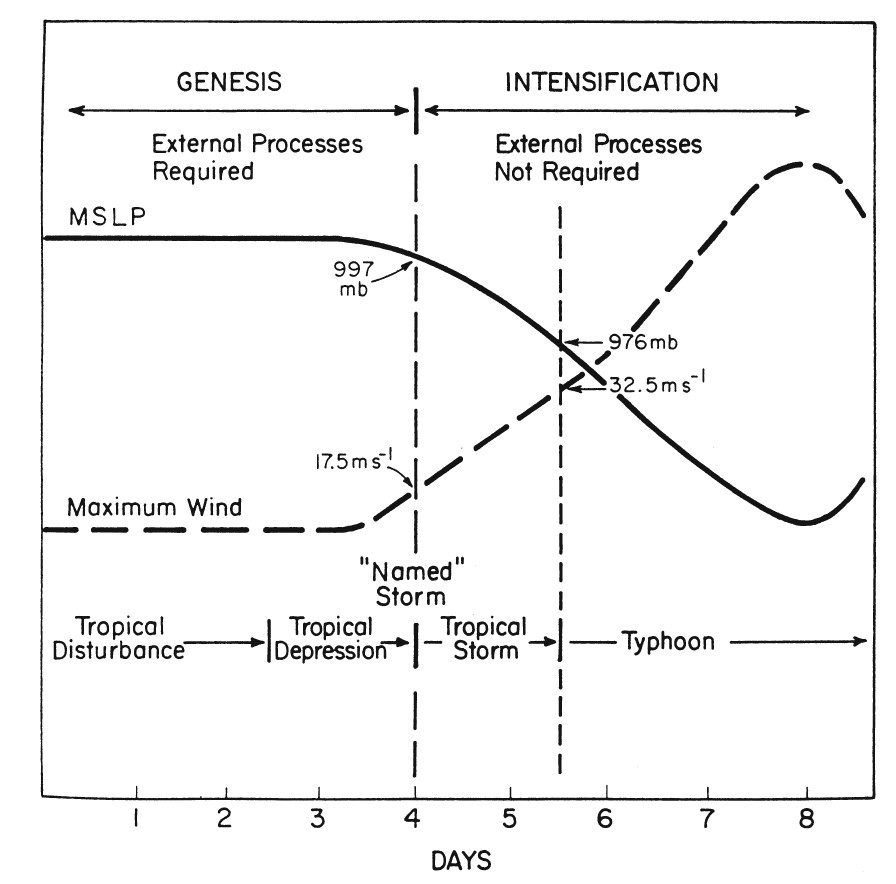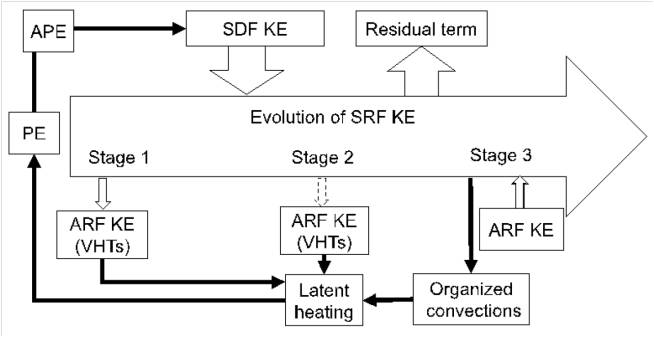Tropical cyclones (TCs) are intense storms with a warm core and a low-pressure center, forming over tropical or subtropical oceans. They impact three ocean zones most frequently: Northwest Pacific, Northwest Atlantic and Bay of Bengal (Chen and Ding, 1979). TCs act as an important water resource for low-latitude regions. However, TC-induced heavy rainfall, strong wind, storm surges and accompanying disasters make TCs the most threatening natural disasters to human being, such as the severe hazards caused by Hurricane Katrina (2005) and Sandy (2012) in the United States. China, with a long coastline and its special geographical location, is one of the countries most affected by TCs, such as the severe hazards by Severe Tropical Storm Bilis (2006) and Typhoon Morakot (2009).
Recently, with the development of observational networks and high-resolution numerical models, important progresses have been achieved in theoretical studies and forecasting technologies of TCs’ track, structure, intensity and distribution of wind and precipitation. However, researches about TC genesis have not been paid enough attention to, with few progresses. The South China Sea (SCS) is one of the three main TC genesis regions in the Northwest Pacific. TCs forming in the SCS usually develop quickly and can make landfalls in a short time, not only causing severe damages to the coastal areas, but also exerting severe impacts on shipping trades, military activities and other activities over the SCS. Thus, studies and effective forecasting of TC genesis in the SCS are very important.
The definition of “TC genesis process” is the first thing to be solved in TC genesis research. Zehr (1992) proposed a schematic diagram about TC’s lifecycle (Fig. 1), in which the TC genesis process was defined as an evolution from disorganized tropical disturbances to an initial low-pressure vortex. TC genesis was also depicted as a series of interactions between multiple-scale systems from synoptic scale to convective scale (Chan and Kepert, 2010), resulting in the establishment of a self-sustaining tropical cyclonic vortex with a warm core and certain intensity (Montgomery et al., 2006).

Fig.1 Depiction of typical genesis and intensification periods and their associated minimum sea level pressure (MSLP) and maximum surface wind speed (Zehr, 1992).
However, studies on TC genesis are difficult owing to a lack of observational information. Besides, numerical simulation of TC genesis process is also a difficult issue because of scarce initial information (Nolan, 2007; Park et al., 2015; Zhang and Guo, 2008; Zhang and Cui, 2013). The forecasting of timings and locations of TC genesis is therefore very challenging. The research group led by Dr. CUI Xiaopeng from Institute of Atmospheric physics (ZHANG Wenlong, WANG Yaping and HUANG Yongjie), and their coauthors have been working on TC genesis in the SCS since 2008. They successfully reproduced the genesis process of TC Durian (2001) in the SCS by using numerical model. They also revealed the important role that the mid-level mesoscale convective vortex (MCV) played at the early genesis stage and the typical structure of vortical hot towers (VHTs) during the TC genesis process.
Their recent study (Wang et al., 2016) published on the Monthly Weather Review of American Meteorological Society further investigated the kinetic energy (KE) budget during TC Durian’s genesis process in the SCS. A concept model (Fig. 2) was given to help us better understand the generation mechanism of TC. The genesis process was divided into three stages: the monsoon trough stage (Stage 1), the mid-level mesoscale convective vortex (MCV) stage (Stage 2) and the establishment stage of the TC vortex (Stage 3). Analysis showed that the KE of the symmetric rotational flow (SRF) was the largest and kept increasing, representing the symmetrization process during TC genesis. From the energy budget perspective, the KE of the SRF was mainly converted from the KE of the symmetric divergent flow (SDF), largely transformed from the available potential energy (APE). Massive moist-convection-produced latent heat was concentrated and accumulated within the MCV region in Stages 1 and 2, and further warmed the atmosphere, benefiting the accumulation of APE and the transformation from APE to KE. In Stage 3, latent heat released by the organized convection, instead of disorganized VHTs in the first two stages, continuously contributed to the strengthening of the surface TC circulation as well as the warm core.

Fig.2 A conceptual model of the KE budgets associated with the genesis process of TC Durian. (Wang et al., 2016)
Reference
1) Wang, Y. P., X. P. Cui, X. F. Li, W. L. Zhang, and Y. J. Huang, 2016: Kinetic energy budget during the genesis period of tropical cyclone Durian (2001) in the South China Sea. Monthly Weather Review, doi:10.1175/MWR-D-15-0042.1, in press.
2) Zhang, W. L., and X. P. Cui, 2013: Review of the studies on tropical cyclone genesis. Journal of Tropical Meteorology, 29, 337-346. (in Chinese)
3) Zhang, W. L., X. P. Cui,and J. X. Dong, 2010: The role of the middle tropospheric mesoscale vortex in the genesis of typhoon Durian (2001)—Diagnostic analysis of simulated data. Chinese Journal of Atmospheric Science, 34, 45-57. (in Chinese)
4) Zhang, W. L., D. L. Zhang, A. S. Wang, and X. P. Cui, 2009: An investigation of the genesis of typhoon Durian ( 2001) from a monsoon trough. Acta Meteorologica Sinica, 67, 811-827.
5) Zhang, W. L., X. P. Cui, A. S. Wang, and Z. P. Zong, 2008: Numerical simulation of hot towers during pre-genesis stage of typhoon Durian (2001). Journal of Tropical Meteorology, 24, 619-628. (in Chinese)
6) Zhang, W. L., A. S. Wang, and X. P. Cui, 2008: The role of the middle tropospheric mesoscale vortex in the genesis of typhoon Durian (2001)—Simulation and verification. Chinese Journal of Atmospheric Science, 32, 1197-1209. (in Chinese)
Contact:
CUI Xiaopeng, xpcui@mail.iap.ac.cn
